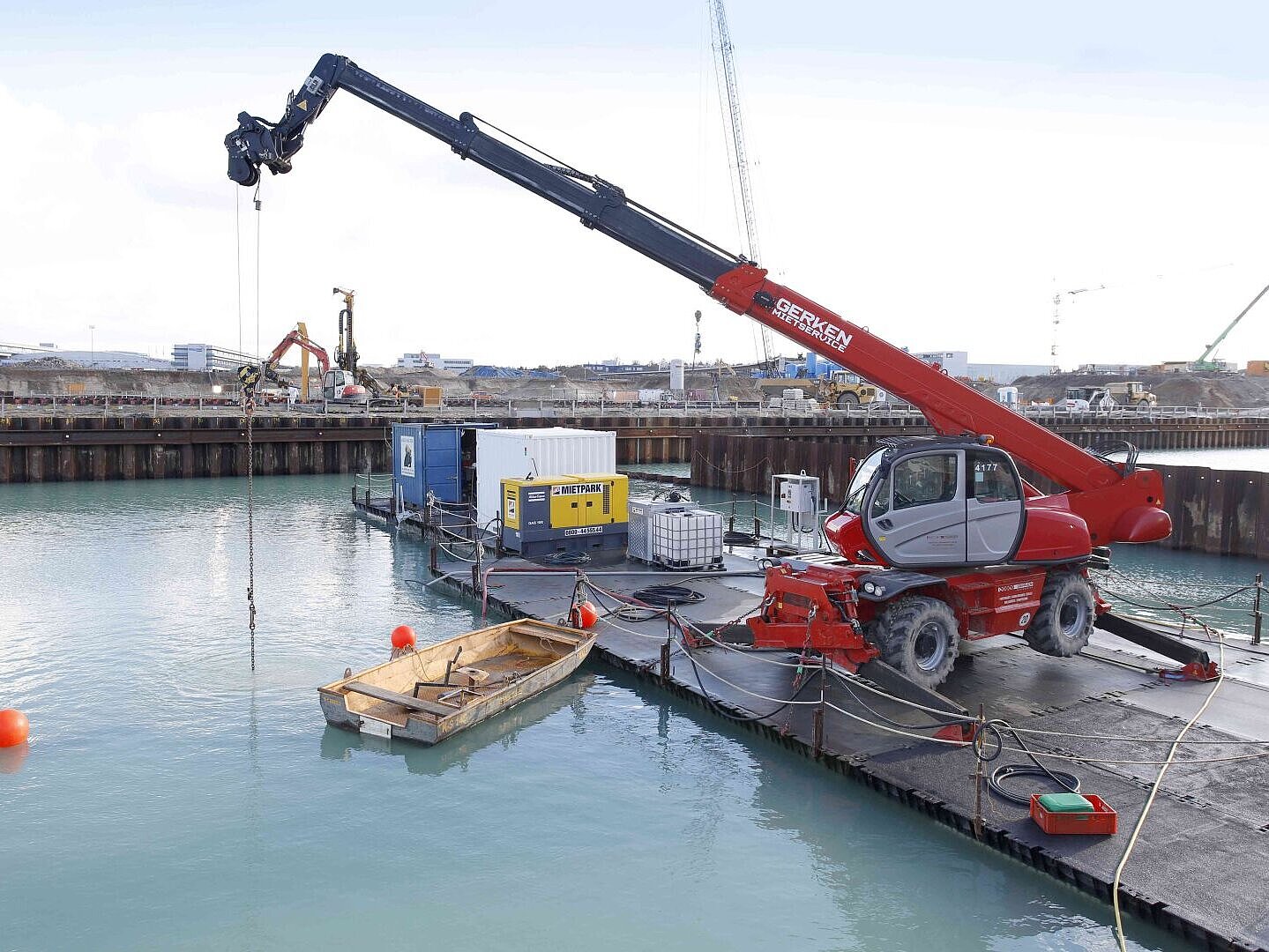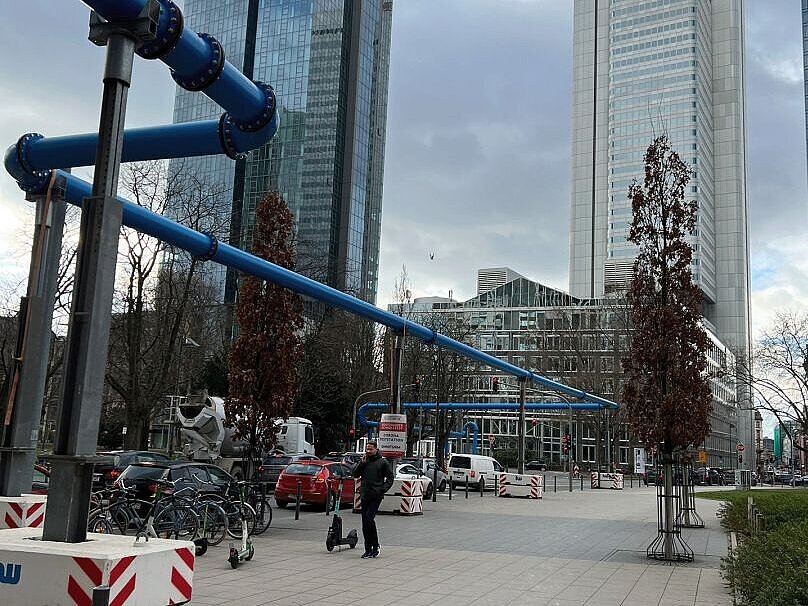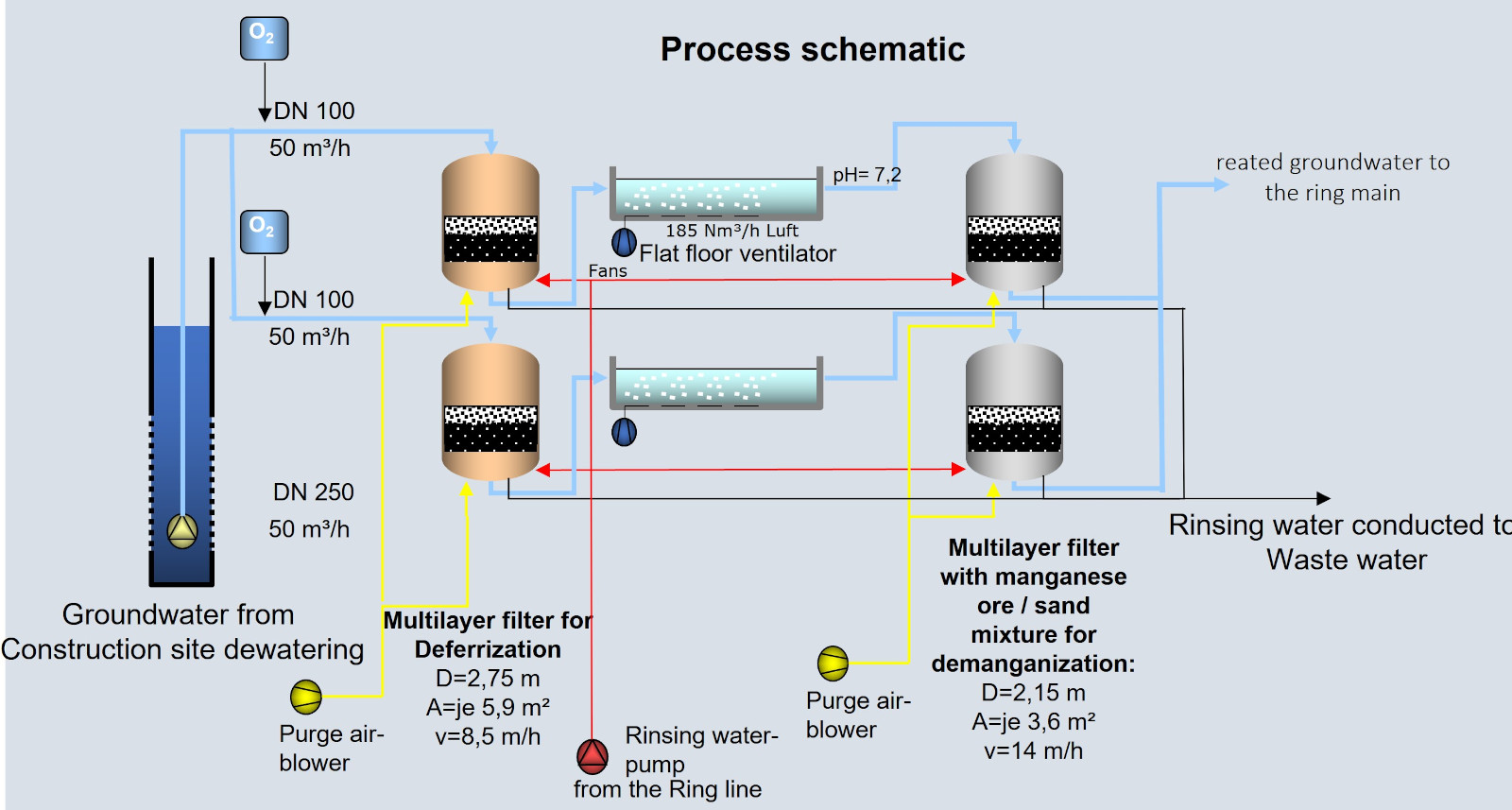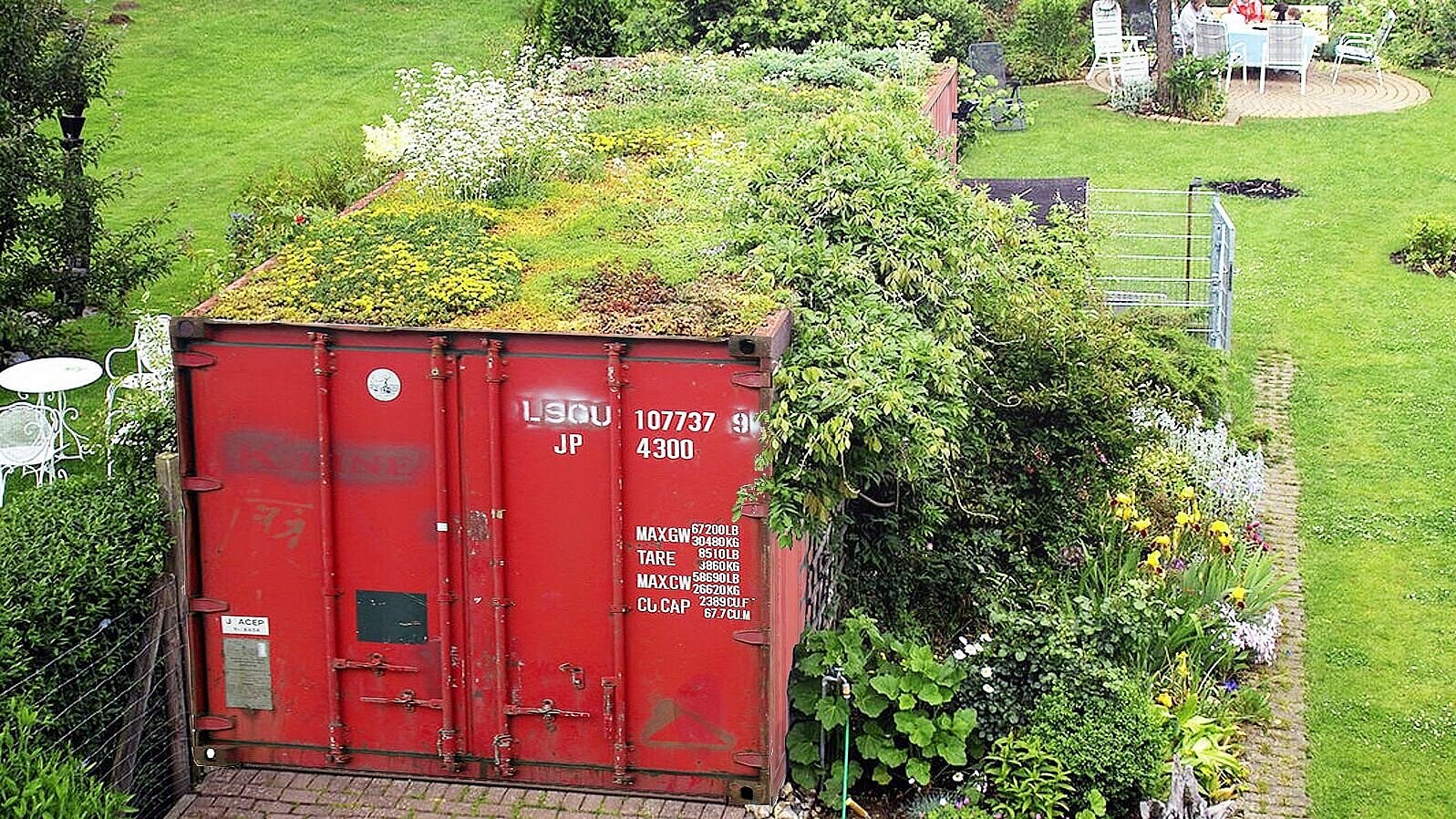Content: Use of excavation pit groundwater for irrigation of urban greenery
In Frankfurt, groundwater from excavation pits represents an untapped potential of up to two million cubic meters of water per year for city-owned irrigation. Until now, these enormous quantities of water have simply been discharged into the Main River or other nearby watercourses.
With the help of the Frankfurt Bridges, this water potential is to be used for the irrigation of the city greenery.
However, before excavation pit groundwater can be fed into the water system of the Frankfurt Bridges and subsequently used as irrigation water, it must first be thoroughly treated.








